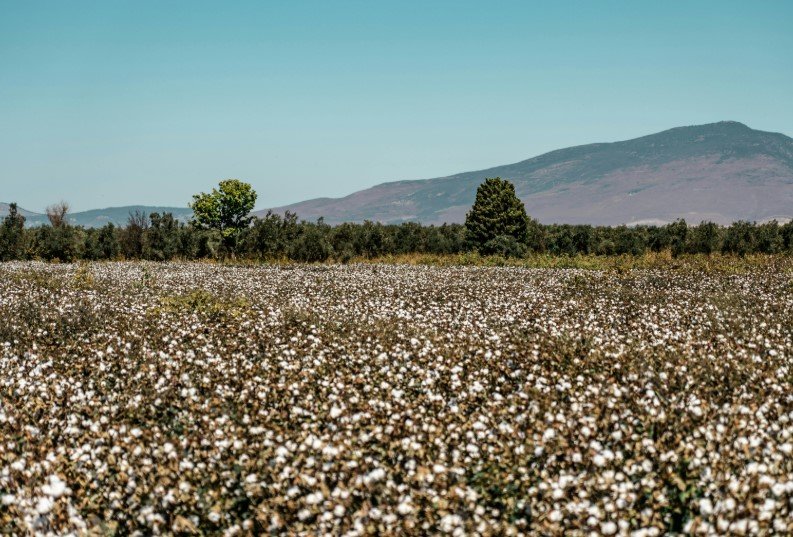Georgia farmers are facing a new threat as an invasive insect called the cotton jassid spreads quickly across the state. State officials warn that this tiny pest could cause major damage to cotton and other key crops just as harvest season begins in 2025.
What Is the Cotton Jassid?
This small green bug, known scientifically as Amrasca biguttula, comes from the Indian subcontinent. It measures about one tenth of an inch long and has a black spot on each wing, making it easy to spot up close.
Farmers often notice the damage before seeing the insects themselves. The bugs feed on plant leaves from underneath, sucking out cell contents and blocking photosynthesis. This leads to yellowing and browning leaves, a condition called hopperburn that can kill parts of the plant.
The pest first showed up in the United States Virgin Islands and Puerto Rico in 2023, then reached Florida in 2024. By July 2025, it appeared in Georgia’s Seminole County, and experts say it likely traveled through trade routes or shipping.
Rapid Spread Across Georgia
Since its first sighting in southwest Georgia, the cotton jassid has moved fast. By late August 2025, state agriculture officials confirmed it in at least 13 counties, mainly in the cotton belt.
Commissioner Tyler Harper of the Georgia Department of Agriculture issued alerts urging farmers to inspect their fields right away. He noted the pest’s quick spread poses a serious risk to the state’s top row crop.
Recent reports show the insect thriving in warm weather, which has helped it expand northward. Farmers in affected areas report seeing more infestations as temperatures stay high into September 2025.

Experts link this spread to similar patterns seen with other invasive species. For example, the spotted lanternfly moved quickly through eastern states after arriving in 2015, causing widespread crop issues.
Impact on Crops and Economy
Cotton is Georgia’s most valuable row crop, worth over $1 billion in 2022 according to state data. The jassid’s feeding can cut yields by up to 50 percent in bad cases, leading to big financial losses.
But cotton is not the only target. The pest also attacks peanuts, eggplant, soybeans, okra, and sunflowers. Peanuts alone brought in about $600 million for Georgia farmers in recent years.
Here are some key crops at risk:
- Cotton: Main host, leads to leaf damage and lower fiber quality.
- Peanuts: Causes stunted growth and reduced nut production.
- Eggplant and Okra: Results in curled leaves and poor fruit development.
- Soybeans: Lowers overall plant health and bean yields.
If unchecked, this could hurt Georgia’s agriculture sector, which supports thousands of jobs. In 2024, invasive pests cost U.S. farmers billions nationwide, and Georgia saw issues with species like the yellow legged hornet.
| Crop | Potential Yield Loss | Economic Value in Georgia (2022) |
|---|---|---|
| Cotton | Up to 50% | $1.1 billion |
| Peanuts | 20-40% | $600 million |
| Eggplant | 30% | $50 million |
| Soybeans | 15-30% | $200 million |
This table shows why quick action matters for local economies.
The timing is tough, with cotton harvest starting soon. Farmers worry that infestations could ruin crops ready for picking, adding to challenges from weather and market prices.
Official Response and Prevention Tips
State leaders are teaming up with the University of Georgia Extension Service and the Georgia Cotton Commission to fight back. They are researching treatments and sharing info on spotting the pest early.
Commissioner Harper remains hopeful, saying entomologists are close to finding effective controls. In the meantime, he advises contacting local extension offices for help if bugs are found.
Prevention focuses on monitoring and quick reporting. Farmers should check leaf undersides regularly and use approved insecticides if needed. Integrated pest management, like rotating crops and removing weeds, can also slow the spread.
Georgia has dealt with invasives before, such as the spotted lanternfly in 2024, which prompted statewide alerts. Lessons from those events are guiding the current response.
Looking Ahead for Georgia Farmers
As the pest continues to spread in 2025, experts predict it could reach more states if not contained. Climate changes, with warmer winters, might help these bugs survive and move farther.
Farmers and officials stress the need for community effort. Sharing sightings and following guidelines can limit damage.
What do you think about this invasive threat? Share your thoughts in the comments and spread the word to help inform others.
